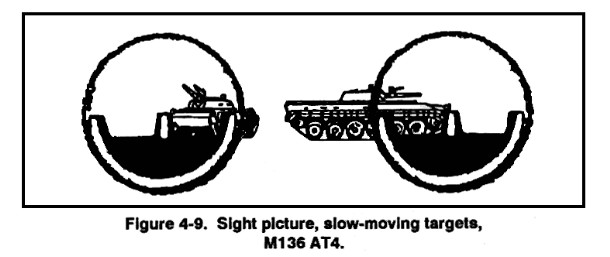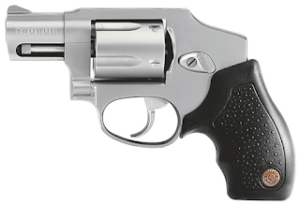The other night, I had a dream that insisited that I should go back and re-read a webpage I had encountered about a week ago. This article was the key to a new way to look at accuracy, my dream told me. (Even my subconscious tries to sell me on clickbait, it seems!)

I am not sure this article actually does that, but it makes for interesting reading, the little that I think I understand. Since I do not read Cyrillic and some of the translation choices are unusual, I am missing certain parts.

One part that was very clear was:
…monograph of the Central Research Institute of Information “The effectiveness of automatic firing weapons”:“ 3.5. The degree of combining the midpoint of hits with the center of the target ..determines the accuracy of shooting”
This reminds me that the effective range of a weapon system is a product of target size and weapon system accuracy and precision.

How Accurate Do You Need?
For an example, let us consider a system of a shooter, firearm and ammunition.
Firing semi-automatically, this system manages groups of about two and three-quarter minutes of angle/arc (MOA). This will not impress many of you, but we are considering this system shooting in combat conditions rather than on the target range.
2.75 MOA may be treated as three inches at 100 metres. (It is actually 2.858 inches at 100 yards/91 metres, but we will treat it as the former for purposes of illustration)
A human head is about six inches wide. Providing our shooter can aim and shoot competently, we can expect our shooter to make most head shots within 200 metres. Not too shabby!
Most decisive rifle combat takes place at under 200 metres. Most likely targets will not expose an area much larger than a head. Our three MOA shooter’s accuracy and precision is quite adequate.
As an aside, would it not be more realistic to make all combat targets head-sized? Since targets would only need to be A4-size, this would save paper and money!
The vital area of a deer is also around six inches or more. And most hunters try to take deer at well under 200 metres.
Make things even simpler for yourself by zeroing your rifle to 200 metres. 72% of rifle engagements occur at 200 metres or less.
Learn the correct holdover/aiming point for the rare times you will need a longer shot. There is unlikely to be time to fiddle with your sights and dial up the range.
What about torso shots? A human is about 18 inches across the shoulders, about three times the width of the head. Our shooter should be able to put bullets within a torso out to about 600 metres.

It is worth remembering, however, that a bullet takes around a second to reach 600 metres. Even if you are a trained sniper, you will have to make a shot like this as a surprise attack.
If the enemy is aware of you and dodging, ducking and dashing, hits are going to be more a product of luck than skill. Might be better to save ammo until it may be used more effectively?
Shots against active, distant targets are best left to the machine guns, mortars and artillery. A machine gun that was firing at 2.75 MOA would probably be well regarded. At 600 metres it would put most of its burst into an area less than man-sized.
Full frontal torso shots may actually be rare under certain combat conditions. Many targets will be in cover and not exposing much more than their heads. What torso shots can be made, will be against targets crossing your line of sight or moving obliquely.
If we consider the apparent average torso width here as about twelve inches, we can expect our shooter to make hits out to 400 metres, should targets be actually visible at this distance. 97% of rifle engagements do not exceed 400 metres.
Our shooter should keep his rifle at a 200 metre zero and aim somewhere between armpit- and chin-height. This will produce a hit somewhere on the torso from 200 metres+. A higher aim point may be needed as range approaches 400 metres and beyond. The bullet will hit about 30 cm low of the aim point at 300 metres, three-quarters of a metre low at 400 metres.
Time of flight to 300 or 400 metres will be about a third of a second, so he should lead his target a little, but not too much.
So far we have only considered semi-automatic fire. If our shooter fires on fully automatic and measures the diameter of the group produced, effective range for automatic fire against head and torso targets may be calculated.
Conclusion
The Russian article makes the point that there is little point in adopting a more accurate/precise rifle if the sights are flawed.
The small group the AN-94’s hyperburst produces just makes it more probable for both rounds to miss the intended target if the aim point is wrong.
Generally, it is the shooter rather than the weapon or ammo that is the limiting factor.
Many of you reading this are capable of shooting a rifle better than 2.75 MOA.
If so, you are have adequate precision for realistic combat/defensive scenarios, which are most likely at less than 200 metres.
The ideal iron sight for combat would probably be an L-flip sight with a 5mm aperture zeroed to 200m and a 1.75mm aperture zeroed to 400m.
But, for such an application, does even higher precision actually contribute to a real increase in functionality?
As long as the group we shoot is smaller than the area of the likely target, at likely engagement ranges, is a smaller group actually a practical advantage?
Is it even possible that a tighter group may decrease our chances of hitting the intended target if our aim is slightly off?
Something to ponder before you hand over your hard-earned cash for the latest customization or accessory to give your defensive or deer rifle even greater sub-MOA performance?













